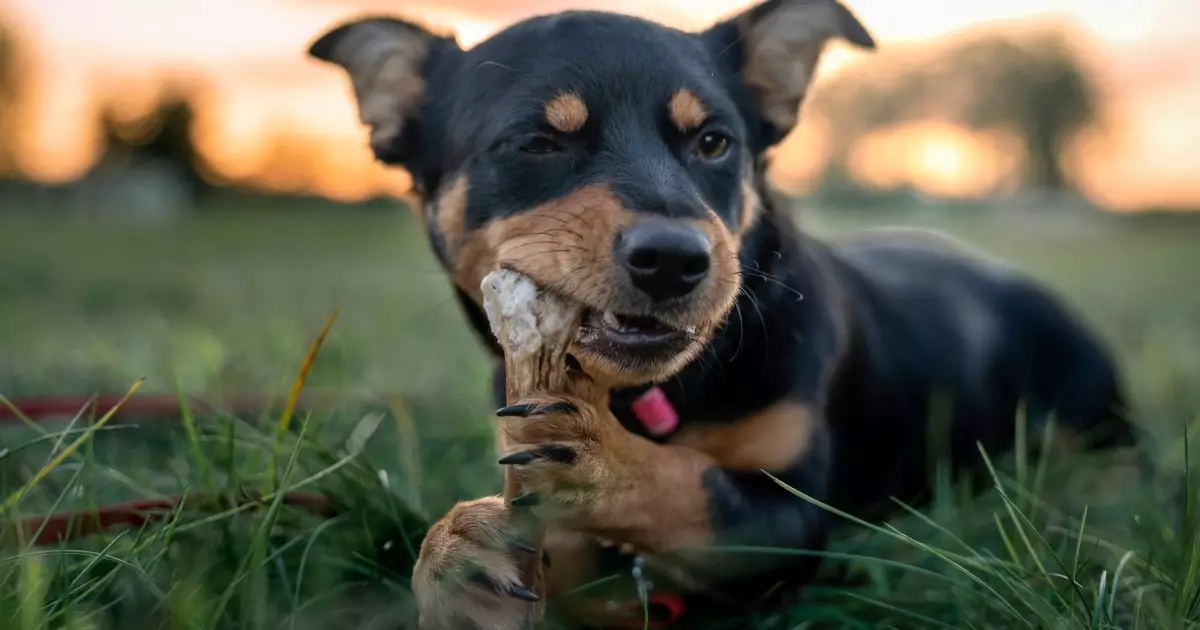For dog owners, the prospect of treating their furry companions with bones can be both tempting and treacherous. With a plethora of information circulating about the safety of giving bones to dogs, understanding which options are genuinely safe and beneficial is crucial. The reality is that not all bones are created equal—some can be detrimental to your dog’s health. As custodians of our pets’ welfare, we have a responsibility to ensure that the rewards we provide do not come with hidden dangers.
Before introducing any new foods, including bones, into your dog’s diet, consulting your veterinarian is an absolute necessity. This preemptive step allows you to gain insight tailored specifically to your dog’s health status, dietary needs, and behavioral characteristics. Such discussions can help prevent a scenario where a seemingly innocent treat turns into a medical emergency.
The Hazards of Cooked Bones
There is a prevailing misconception among dog owners that all bones are safe for canine consumption. Unfortunately, this belief is especially misguided with cooked bones. Bones that have been cooked—whether they originate from chicken wings, pork ribs, or other culinary scraps—can pose significant risks due to their propensity to splinter. When these fragments are ingested, they can lead to a multitude of serious health issues including fractured teeth, lacerations in the mouth, and blockages in the gastrointestinal tract.
Moreover, the U.S. Food and Drug Administration (FDA) has issued alarming warnings regarding commercially processed bone treats. A notable incident in 2015 included 35 documented cases of dogs suffering severe health complications after consuming products like ham bones and pork femur bones. The reality is that these treats, which often undergo drying or smoking processes and may feature added chemicals, present a substantial risk to canine health. Animals consuming these products reported symptoms ranging from choking to life-threatening gastrointestinal blockages, underscoring the critical need for vigilance when selecting pet treats.
Raw Bones: The Better Alternative?
When it comes to raw bones, opinions vary widely within the veterinary community. Advocates argue that unprocessed bones, such as those from beef or lamb, can be beneficial, as they are softer, easier to digest, and more likely to encourage natural chewing behaviors in dogs. However, caution still prevails; raw chicken bones, for example, are notorious for splintering and can also pose a choking hazard.
While raw bones generally do provide certain nutritional advantages—such as calcium, phosphorus, and other minerals—there’s an added risk of bacterial contamination. Proper handling, such as cleaning and storing the bones with care, is essential to mitigate potential health risks associated with pathogens like Salmonella and E. coli.
The Pros and Cons of Chew Treats
Beyond the traditional meat bones, options like rawhide and bully sticks also surface in discussions about dog treats. Rawhide chews often come with their assortment of risks, including potential toxicity due to the manufacturing process or contamination with harmful bacteria. On the other hand, bully sticks present a more digestible choice but are not entirely without their dangers, particularly for aggressive chewers who may attempt to gulp them down too quickly.
Both types of treats demand supervision during use. The danger of choking remains a constant threat regardless of the quality of the chew. Observing your pet while they enjoy these treats can provide a layer of security against potential accidents, ensuring that your pup’s chews extend pleasure without peril.
Implementing Safe Chewing Practices
If you decide to allow your dog to enjoy bones, adhering to strict guidelines can significantly enhance safety. Begin by supervising your dog’s chewing sessions diligently, never allowing them to chew unattended. This vigilance helps mitigate the risk of choking or injury due to excessively aggressive chewing.
Moreover, be mindful of how quickly your dog devours their treats. If they tend to inhale their food, bones can become a choking hazard. Also, it is prudent to discard bones that become small, brittle, or overly gnawed—transitions that heighten the risk of splintering.
Keeping bones for no longer than a few days and refrigerating them when not in use can also thwart bacterial growth. Understanding your dog’s specific chewing habits will guide your decisions on whether to provide bones at all.
The Bigger Picture: Health Benefits vs. Risks
While the health benefits of chewing bones—which includes supporting dental hygiene and promoting mental stimulation—are well-documented, the potential risks have sparked considerable debate among dog owners. Certain veterinarians advocate for derived products, like bone meal supplements, which deliver essential minerals without the hazards that traditional bones present. However, these alternatives lack the satisfying experience of chewing that many dogs relish, leaving pet owners weighing their options carefully.
Ultimately, the responsibility lies with pet parents to educate themselves and seek professional advice to make an informed decision regarding bone treats. By blending caution with informed choices, we can ensure our beloved dogs enjoy their lives without unnecessary risks to their health.

